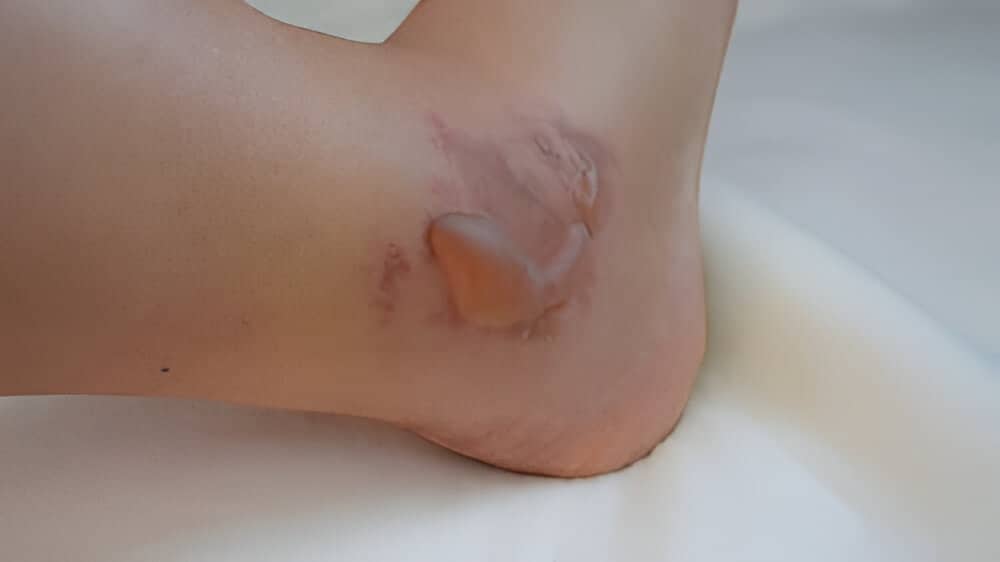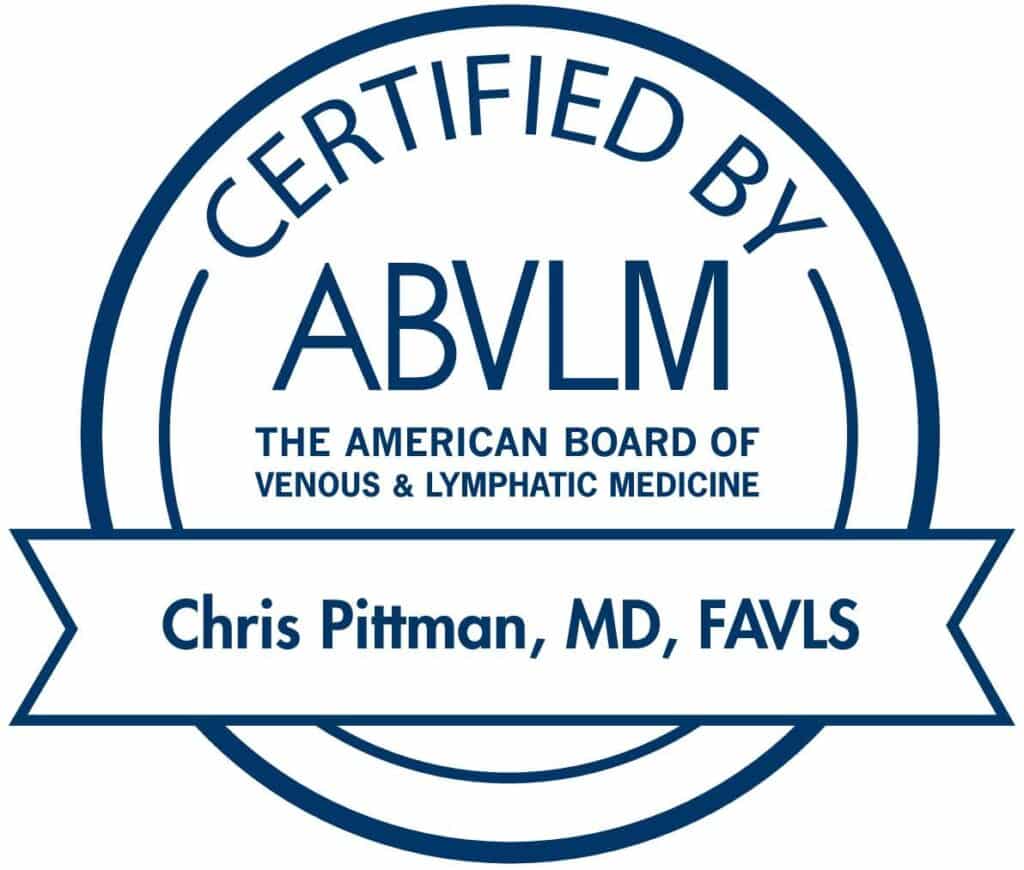Leg and Ankle Swelling
Leg and especially ankle swelling is a common problem. In fact, 75% or 3 out of 4 patients who walk through our office doors have some detectable ankle swelling! Many of our patients, and their primary care doctor, are not even aware that they have ankle swelling. Ankle and leg swelling is NOT a normal part of the aging process and is often unrecognized and untreated vein disease. Vein911® Vein Treatment Centers Vein Care Specialists are EXPERTS in leg and ankle swelling! Make an appointment today.
What Causes Swollen Legs and Ankles?
Many people experience swelling in their lower legs and ankles. This can occur for a variety of reasons. For instance, the body’s lymphatic system normally keeps fluid levels in balance. If lymph nodes are damaged or surgically removed, fluid can build up in tissues throughout the body (lymphedema), which may be particularly noticeable in the ankles. Leg swelling is also a common side effect of certain medications, such as nonsteroidal anti-inflammatory drugs (NSAIDs) and calcium channel blockers. Additionally, it often occurs during pregnancy as the body increases its blood production to support the growing fetus, which can pressure the veins in the legs. Finally, carrying excess body weight can burden the leg veins, leading to swelling.

With that said, the most common cause of swollen legs and ankles is undiagnosed vein disease. The swelling occurs due to a disruption in the normal flow of blood through the leg veins, resulting in an accumulation of fluid and increased pressure in the affected limb (edema). Usually, edema is painless and worsens as the day progresses. It is often more pronounced after prolonged standing or sitting.
According to the American Vein & Lymphatic Society, an estimated 80 million Americans have vein disease, a complex and potentially serious health issue that requires specialized medical attention. The dedicated team at Vein911® Vein Treatment Centers in Tampa, Florida, focuses exclusively on the venous system. Our experienced vascular specialists can provide some helpful insight into the causes, symptoms, and mechanisms behind leg and ankle swelling in the context of vein disease.
Types of Vein Disease That Can Cause Leg and Ankle Swelling
Chronic venous insufficiency (CVI) is a common vein disease characterized by weakened or damaged valves in the leg veins. Valves play a crucial role in ensuring that deoxygenated blood flows in one direction: toward the heart. If a valve malfunctions, blood may flow backward and pool in the vein, where it can create pressure that leads to leg and ankle swelling, heaviness, cramping, and varicose veins.
Deep vein thrombosis (DVT) is a serious vein disease that occurs when a blood clot forms within a deep vein, often in the lower leg. The clot obstructs the flow of blood, causing pressure to build up in the affected vein. As a result, edema can develop. DVT can also lead to pulmonary embolism, a life-threatening complication that can occur if the blood clot breaks free, travels through the bloodstream, and blocks the flow of blood to the lungs.
The Mechanisms Behind Vein-Disease-Related Leg and Ankle Swelling
Vein disease can cause swollen legs and ankles due to several factors, including:
Inadequate Return of Deoxygenated Blood to the Heart
Normally, the calf muscles contract during movement, helping to push the oxygen-depleted blood in the leg veins back toward the heart. However, in the case of a vein disease such as CVI, a damaged valve inhibits the flow of blood. Instead, blood pools in the vein, where it creates pressure and causes edema as fluid leaks into the surrounding tissues.
Increased Capillary Permeability
Elevated pressure in the leg veins can damage tiny blood vessels (capillaries) in the legs. The damage increases the permeability of the capillary walls, allowing fluid and proteins to pass through the walls and leak into the surrounding tissues. This leakage can cause leg and ankle swelling.
Inflammation
Combined with poorly functioning valves, increased pressure in the leg veins can cause turbulent blood flow. This can stress and damage the inner lining of the veins, triggering the body’s inflammatory healing response. Inflammation can further disrupt the normal function of blood vessels and increase fluid retention, contributing to leg and ankle swelling.
Treatment of Swollen Legs and Ankles
The goals of treatment for swollen legs and ankles caused by vein disease are to address the underlying condition, improve vascular health, and alleviate the symptoms. Common approaches include:
Why Choose Vein911 for Leg and Ankle Swelling
At Vein911® Vein Treatment Centers, we do things differently and proudly so. From groundbreaking research to national recognition, Vein911 is redefining what it means to be a world-class vein care provider. We believe that exceptional vein care combines medical expertise with compassion, innovation, and a relentless commitment to excellence. Every patient who walks through our doors is treated like a friend, not a file. We take pride in providing care that’s effective, efficient, and empowering, helping you feel great again with a smile.
Led by Dr. Chris Pittman, a triple board-certified vein specialist and four-time Tampa Magazine Top Doctor (2022–2025), many on our award-winning team are future medical professionals; college-educated pre-professionals on the path to becoming the next generation of vein specialists, ensuring that every patient receives expert, compassionate, and forward-thinking care.
Frequently Asked Questions

When you’re seated or standing still, blood has a harder time moving upward from your legs to your heart. In people with weakened or damaged vein valves, blood pools in the lower legs, causing pressure and swelling by the end of the day. Elevating your legs or walking can help improve circulation.
Venous swelling is from poor circulation and valve dysfunction in the leg veins. It typically affects the lower legs and ankles, worsens with standing, and improves with leg elevation. In contrast, fluid retention from heart, kidney, or hormonal issues tends to be more generalized and may affect other parts of the body.
Common risk factors include age, family history of vein disease, pregnancy, obesity, standing or sitting for long hours, previous leg injury or surgery, and a sedentary lifestyle. Hormonal changes and smoking can also contribute to poor vein function over time.
Yes, swelling in just one leg should always be evaluated by a doctor. While vein disease is a common cause, it can also indicate a blood clot (deep vein thrombosis or DVT) or another circulatory issue. It’s important to seek medical attention promptly to rule out more serious conditions.
Venous ultrasound is the gold standard for diagnosing venous problems. This noninvasive test uses sound waves to show blood flow in your veins and check for valve dysfunction, blockages, or blood clots. Your vein specialist may also conduct a physical exam and review your medical history.
Yes, but you should take precautions. Long flights can cause swelling or blood clots due to prolonged sitting. Move around regularly, flex your ankles often, stay hydrated, and consider wearing compression stockings. If you have significant vein disease or a history of clots, talk to your doctor before flying.
Relieve Leg and Ankle Swelling with Expert Vein Care in Tampa, FL
In conclusion, swollen legs and ankles caused by vein disease result from disrupted blood flow and increased pressure in the lower extremities. If you suspect vein disease as the cause of your swollen legs and ankles, it is essential to consult a vascular specialist for a proper diagnosis and tailored treatment plan. Call us at 813-544-3208 to schedule a consultation. Early intervention can help prevent complications and improve your overall vascular health.










